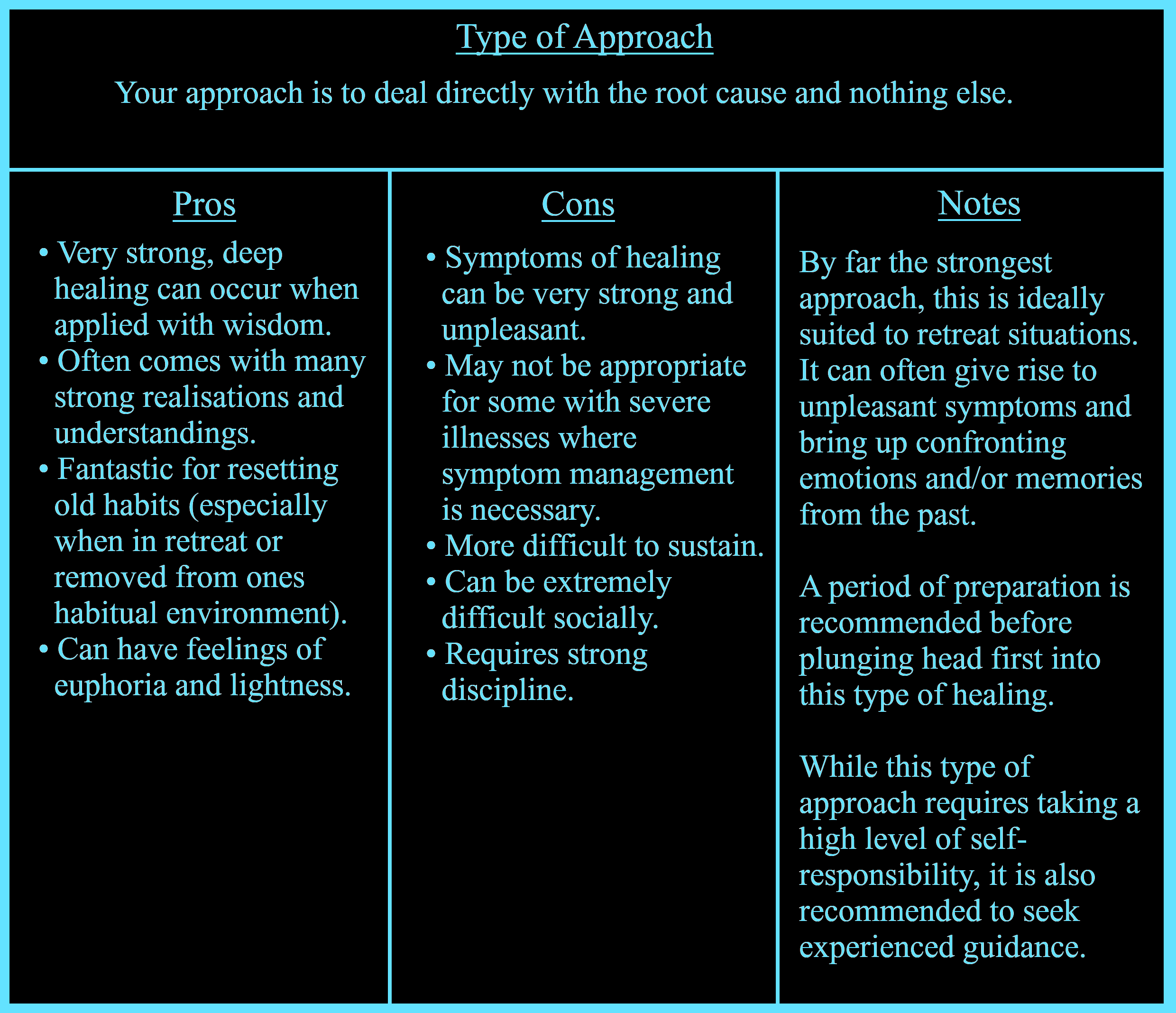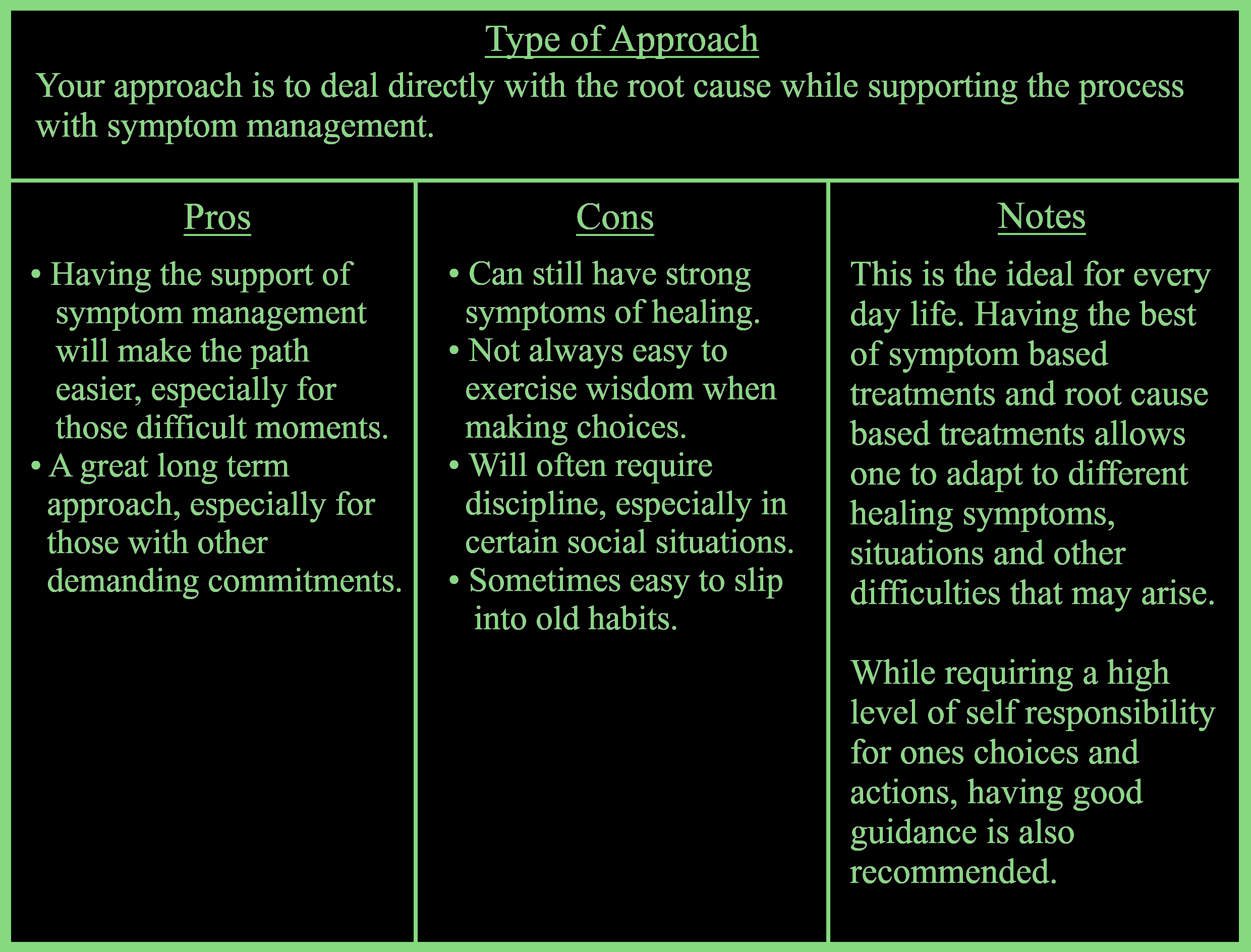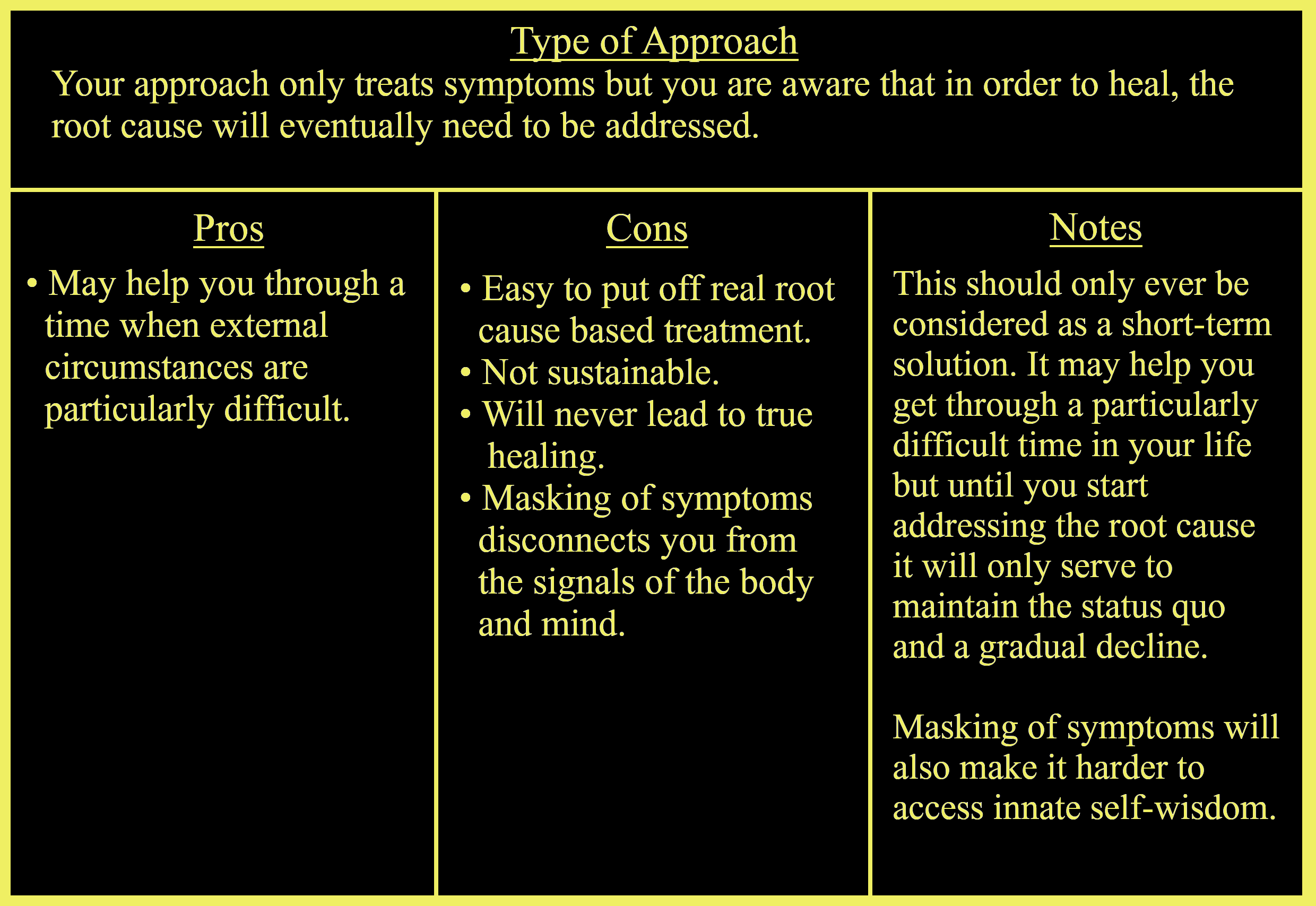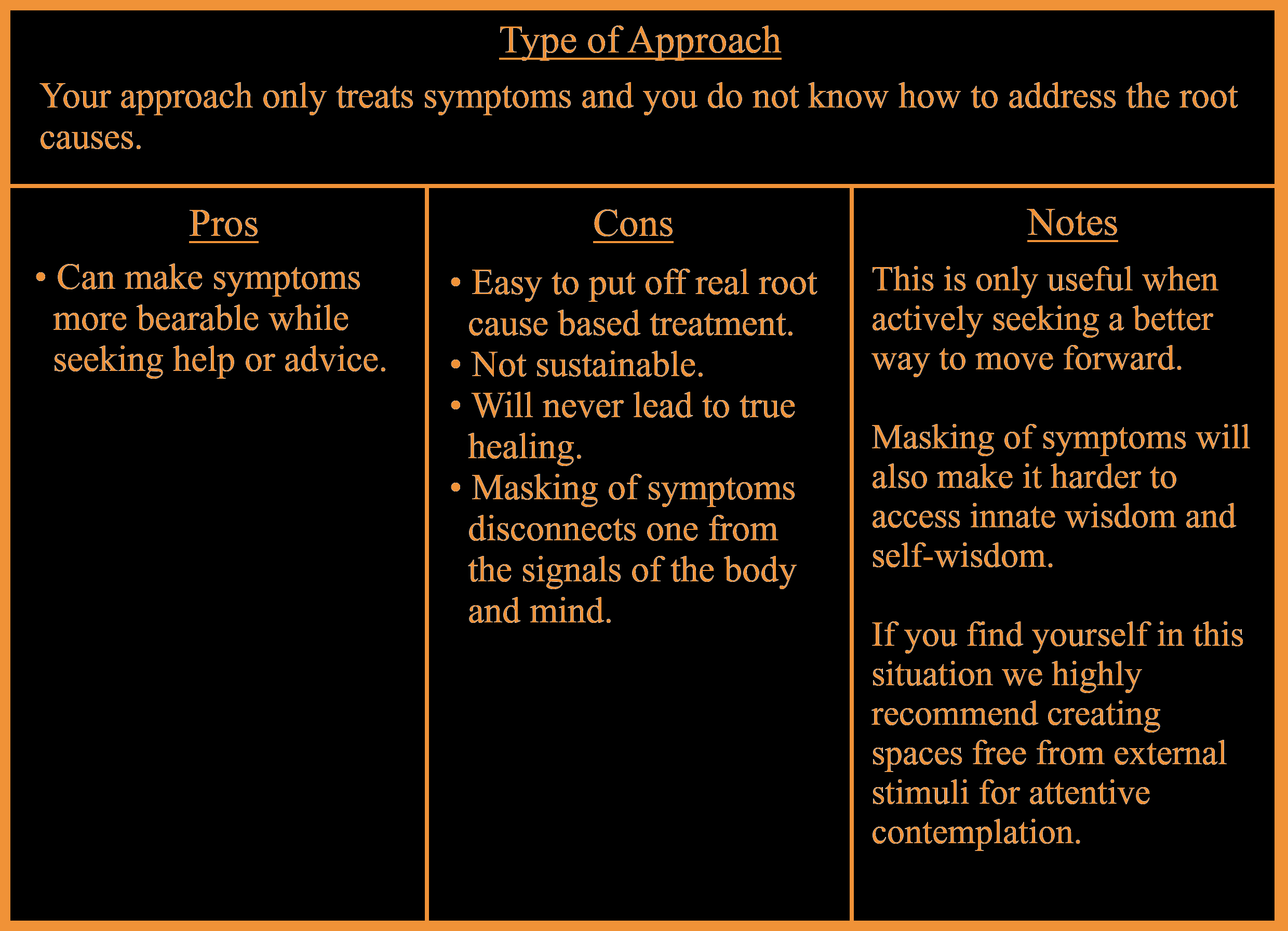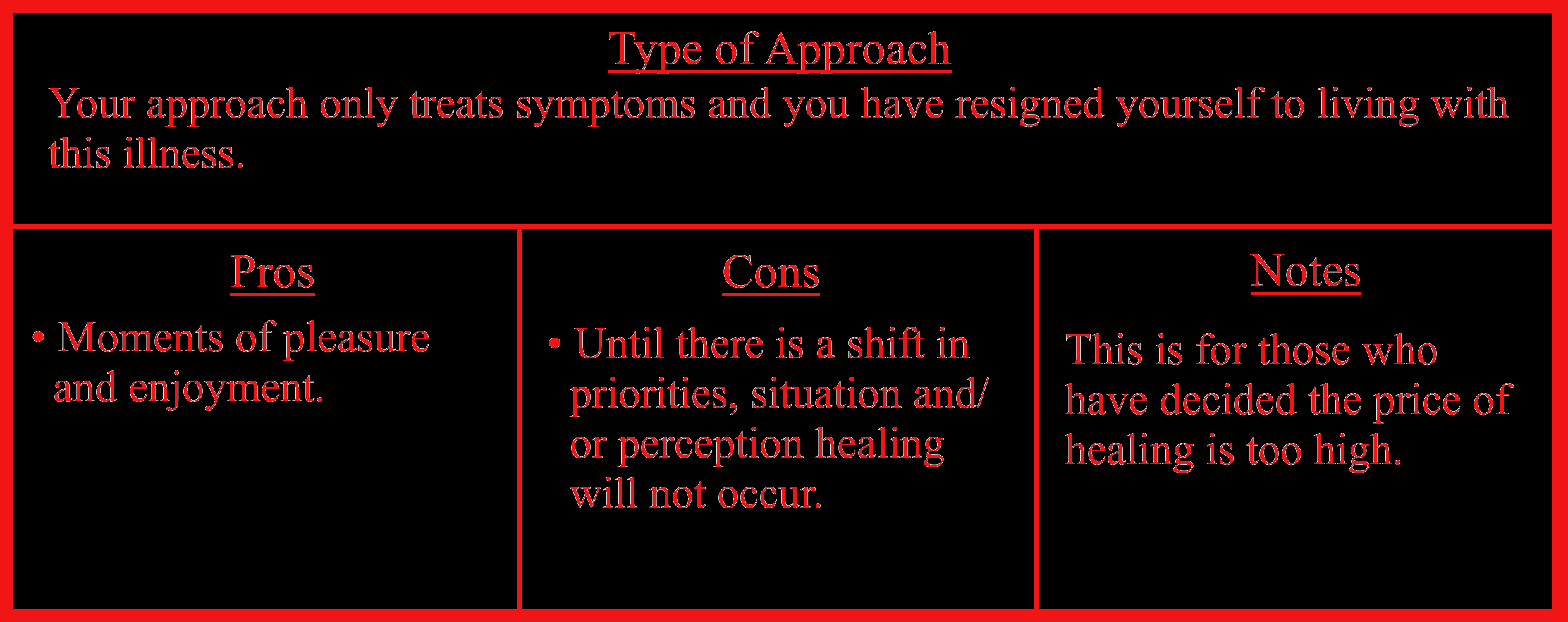09. Symptom Versus Root Cause Treatment
If one is searching for genuine lasting healing, it is important to understand the difference between symptom-based treatments and root-cause-based treatments. Developing this discernment will not only help you better understand the pros and cons of different treatments available, it will also make it easier to map out a more effective path to recovery.
To help better illustrate what we mean by “symptom-based treatments versus root-cause-based treatments” we will use the analogy of a blossoming flower. If the petals of a blossoming flower seem dull and wilting, a gardener doesn’t go into the shed and bring out a bucket of paint to “paint the roses red” or spray them with perfume to strengthen their scent. This would be ‘masking’ the flower’s “symptoms” rather than addressing the “root cause” of why it isn’t a healthy and vibrant plant.
If the gardener is truly interested in helping the flower to be healthy, he/she/they will patiently assess the health of the plant, the soil quality, the water quality and the amount of sunshine the plant’s receiving. If these are all already in place, the gardener would need to zoom further out and explore other factors that may be affecting the health of the flower. For example: Is the gardener’s neighbor using strong chemicals close by to control weeds? Is there a community of insects ravaging the plants roots? Is the plant well suited to the local climate and environment?
Rather than simply “fixing” the symptoms so they are no longer noticeable, the gardener calmly and attentively “listens” to these same symptoms, assesses the environment and uses his/her/their knowledge of the flower to arrive at a deeper and wiser understanding of the root causes. Now that the gardener’s wisdom and knowledge of the root causes has improved, he/she/they can move forward knowing how to create the conditions for the flower to flourish… no need for paints or perfumes anymore!
The following are some simple examples that clearly illustrate this concept in relation to health:
Using sleeping pills to get to sleep rather than addressing an agitated and overwhelmed mind.
Using headache tablets instead of addressing long hours spent at a computer with bad posture at a high
stress job.
Excessive consumption of alcohol in the evenings to cope with a stressful job or life.
Drinking coffee to kick into action after a lack of sleep.
Eating junk food to feel better.
Using insulin to manage diabetes type 2 while not addressing one’s lifestyle.
Using pharmaceuticals for high blood pressure and/or blood cholesterol rather than eating more
responsibly and exercising appropriately.
Using antidepressants instead of seeking counselling, support and taking empowering positive action in
ones life (and even addressing one’s gut health).
And many more.
Unfortunately, these days we all too often choose the flashy, clever, fast acting approach to healing rather than slowing down and taking a deeper look. Discovering the “root cause” takes reflection, inquiry, curiosity, patience and a willingness to reassess and change. Sometimes the change needed can be as simple as a change in attitude but sometimes it may mean deep and fundamental changes in lifestyle, vocation or even social interactions. It is a journey of deeper self-understanding that can sometimes take many unexpected twists and turns.
This is not to say that symptom-based treatments are not important and useful. A symptom-based approach is sometimes vital for sustaining life and necessary to include for one to start working on the root causes of illness. So, as we develop our ability to discern between symptom-based treatments and root-cause-based treatments, it is equally important to develop our ability to apply wisdom to making choices around the types of approaches and treatments we use. To help you assess how you are currently approaching your healing (physical, emotional, mental and/or spiritual) we have created the tables below.
Here is an example from No Mi’s personal experience.
“While working in China I started experiencing migraines for the first time in my life. I was working 12 hour days for months on end, with only one day off a week to recover and do it all again. No matter how healthy my diet was, how harmonious my relationships were, how many treatments I received or how many remedies I tried, the migraines persisted. At best the herb treatments, massage and acupuncture helped me push through another weeks work but it was clear a more fundamental change was needed. This mode of “over-working” and “over-riding” my need to rest was the “root cause”.
After making some changes to my working situation I started noticing a huge difference. The migraines were easing and the effects of the herbs, massage and acupuncture were stronger and longer lasting too.”
If you can also relate this to some part of your life, it’s very important to ask yourself what is the cost of choices like this? In this situation No Mi didn’t want to end her work contract abruptly so she supported her symptoms with the healing modalities of massage, herbs and acupuncture. This helped make the situation more sustainable but she also understood that for her to completely resolve the imbalance would require a lifestyle shift – working more sustainably and prioritizing self-care practices. Here we can clearly see how No Mi shifted from using a wholly symptom-based treatment approach to an approach that addressed both the symptoms and the root-cause.
As with everything, having the wisdom to find the right balance is key; action with inaction; cleansing with nourishing; symptom relief with addressing the root-cause. This is captured beautifully in the Daoist concept of 無為 wuwei effortless action, action/inaction balanced with attentiveness, wisdom and grounded calm.
So to finish up, some tips to support your process of discovery and expansion in your approach to your “symptoms” and their “root cause”:
Rest and slow down. Be the tortoise, not the hare.
Use the 3 regulators of qi to tune in- the breath, the body, the mind.
Practice building energy rather than spending it. In Chinese Medicine they say your kidneys are your bank
account of energy so be mindful not to max them out on credit!
Smile and be patient. It takes time to plant a seed and watch it grow. It takes commitment to remove the
weeds that may pop up at times.
& to quote Wayne Dyer’s interpretation of the 43rd Verse of The 道德經 Dao De Jing by Lao Tsu …
“The soft overrides the hard, always. Live softly.”
In our next two articles, “Healing and the Nervous System” & “The Six Levels of Healing”, we will look more closely at creating the conditions necessary for healing.
Until then, we wish you good health and much joy in your journey.
No Mi & Dawa.


